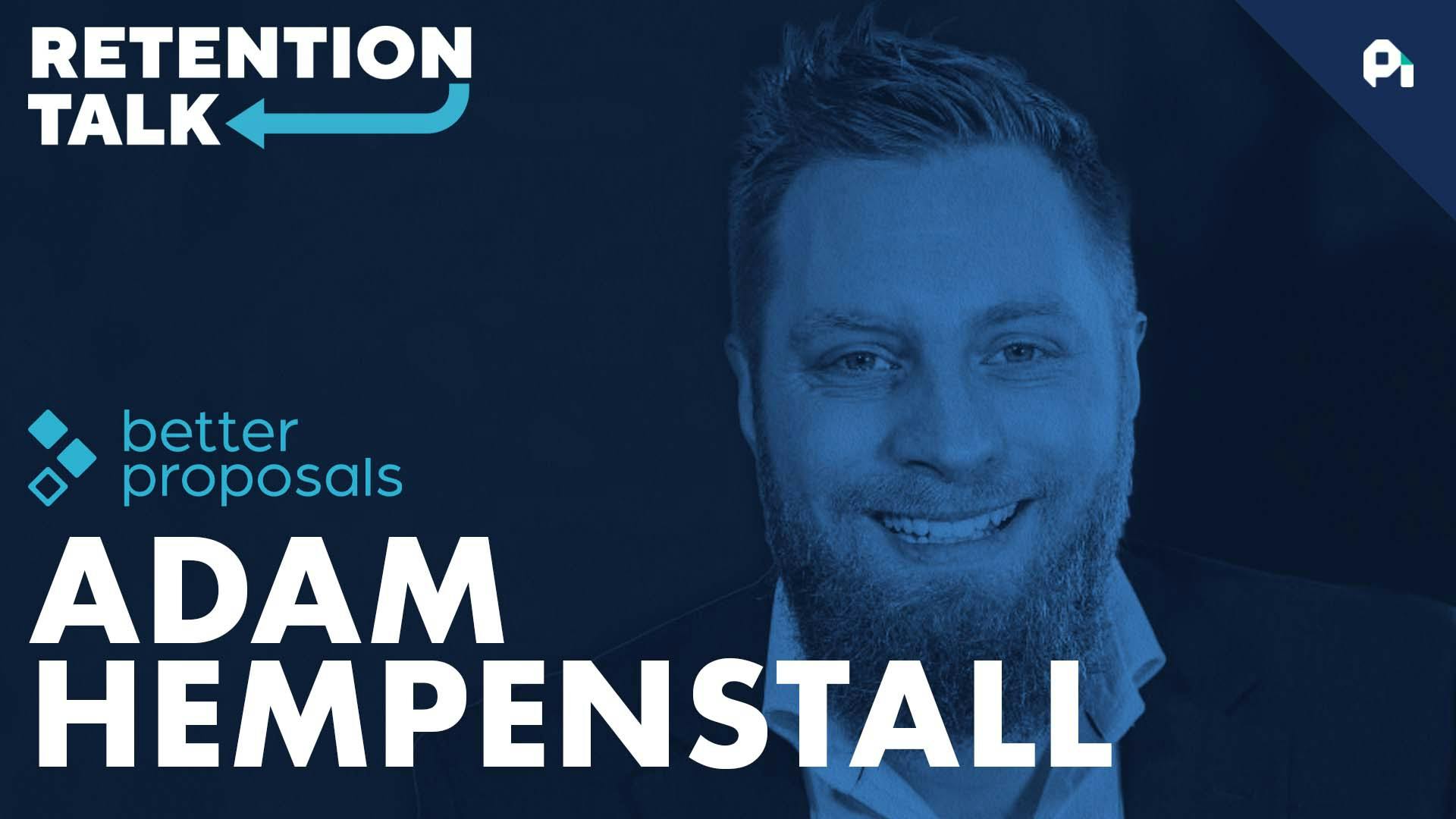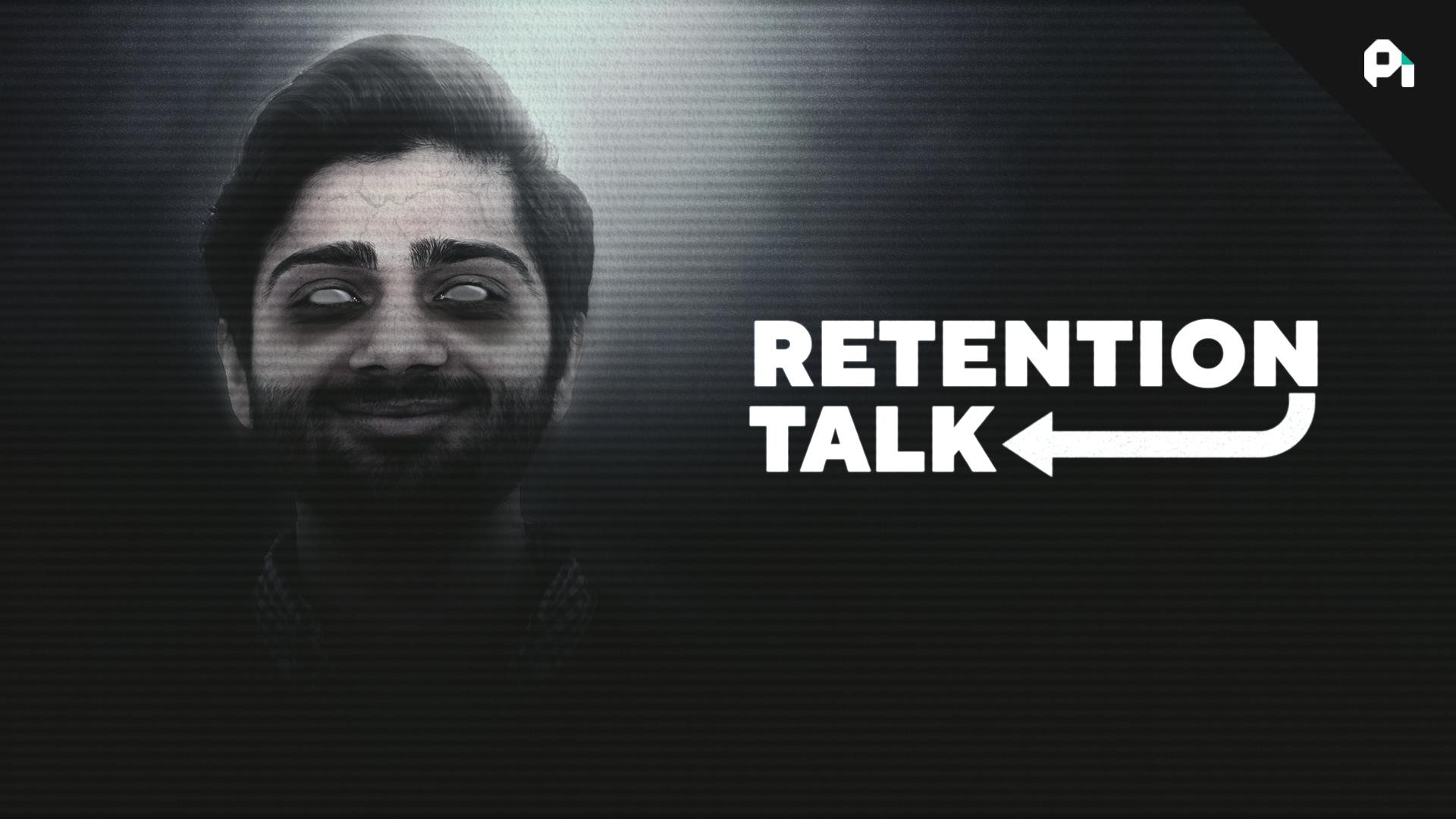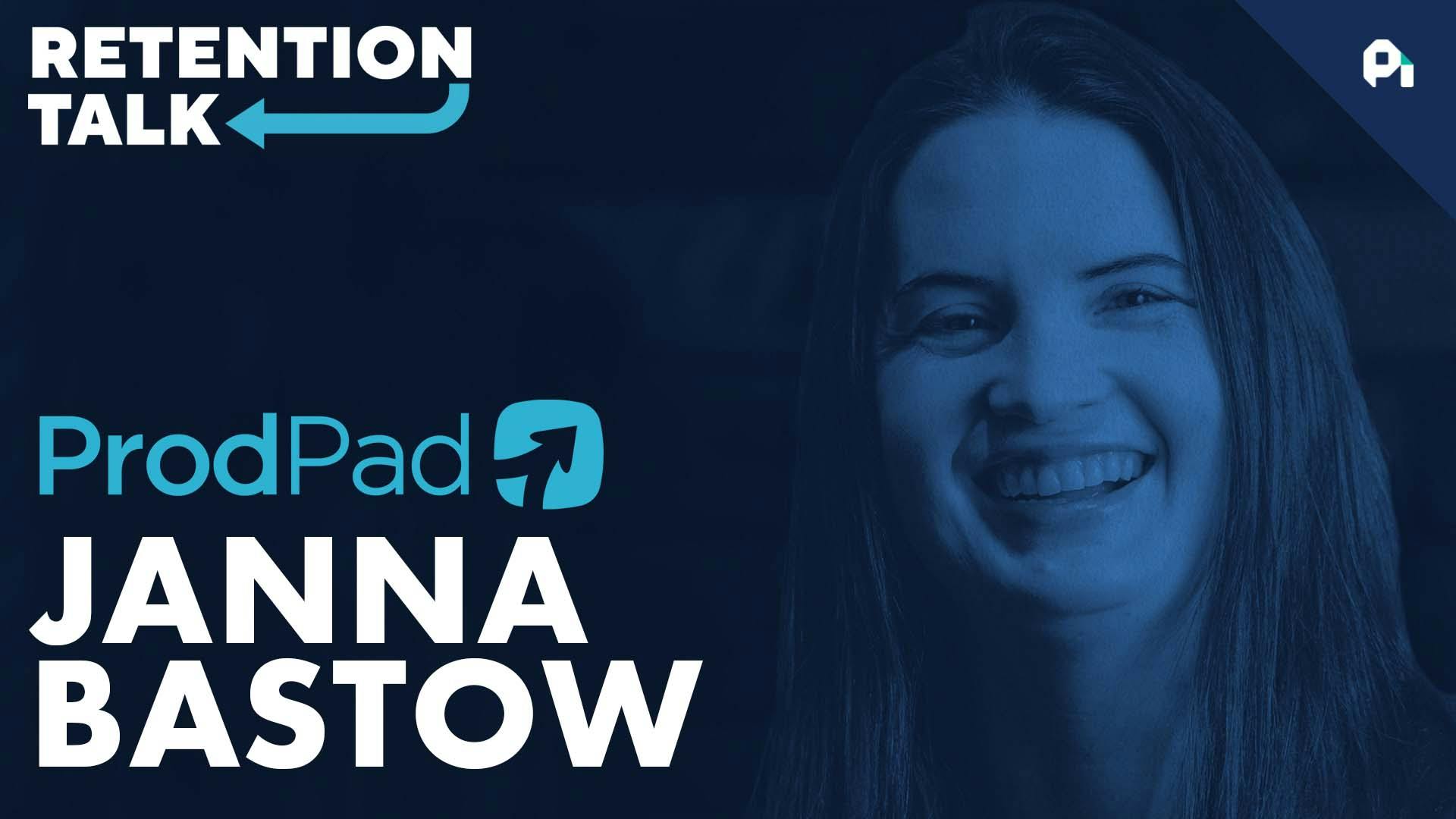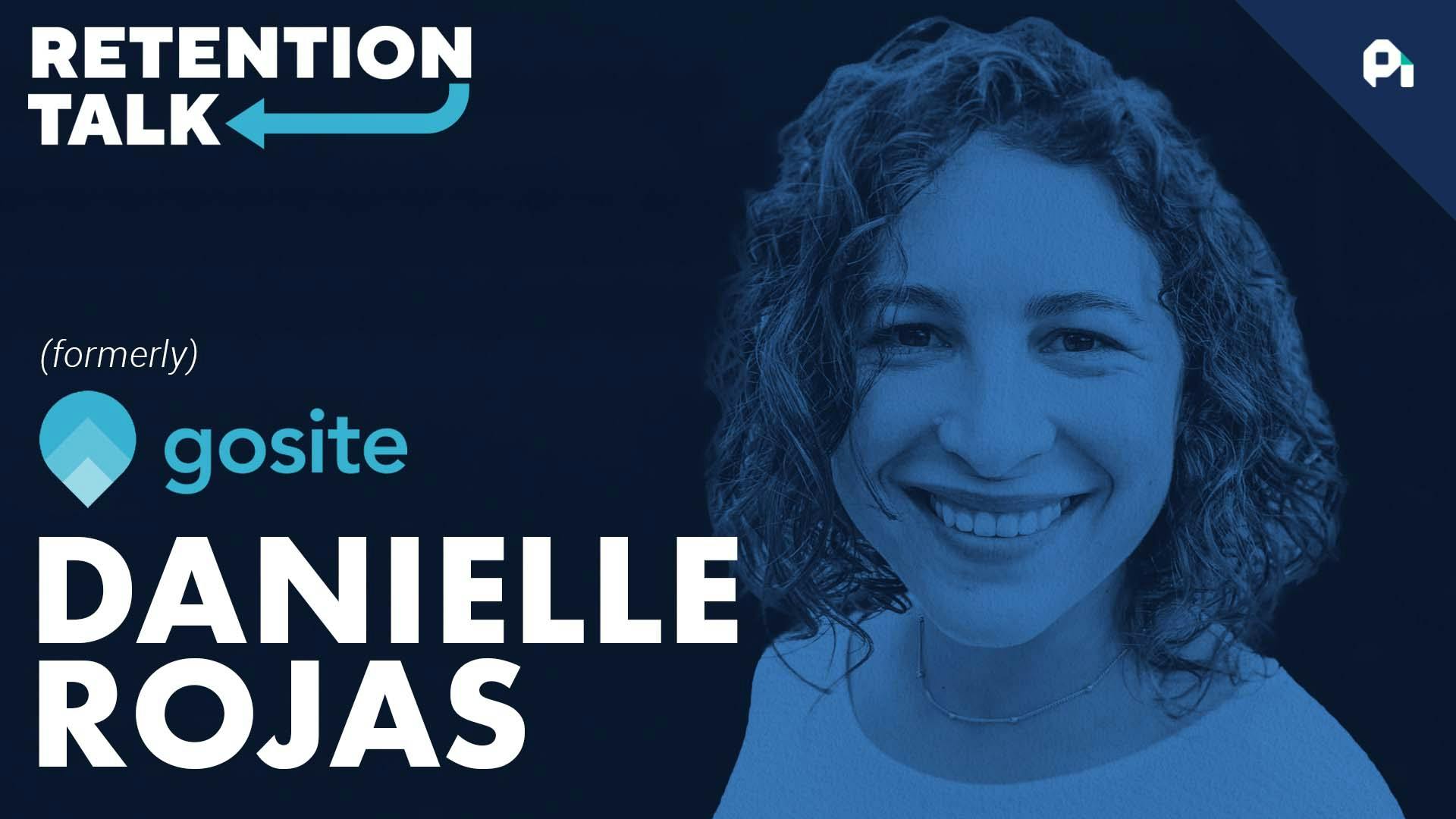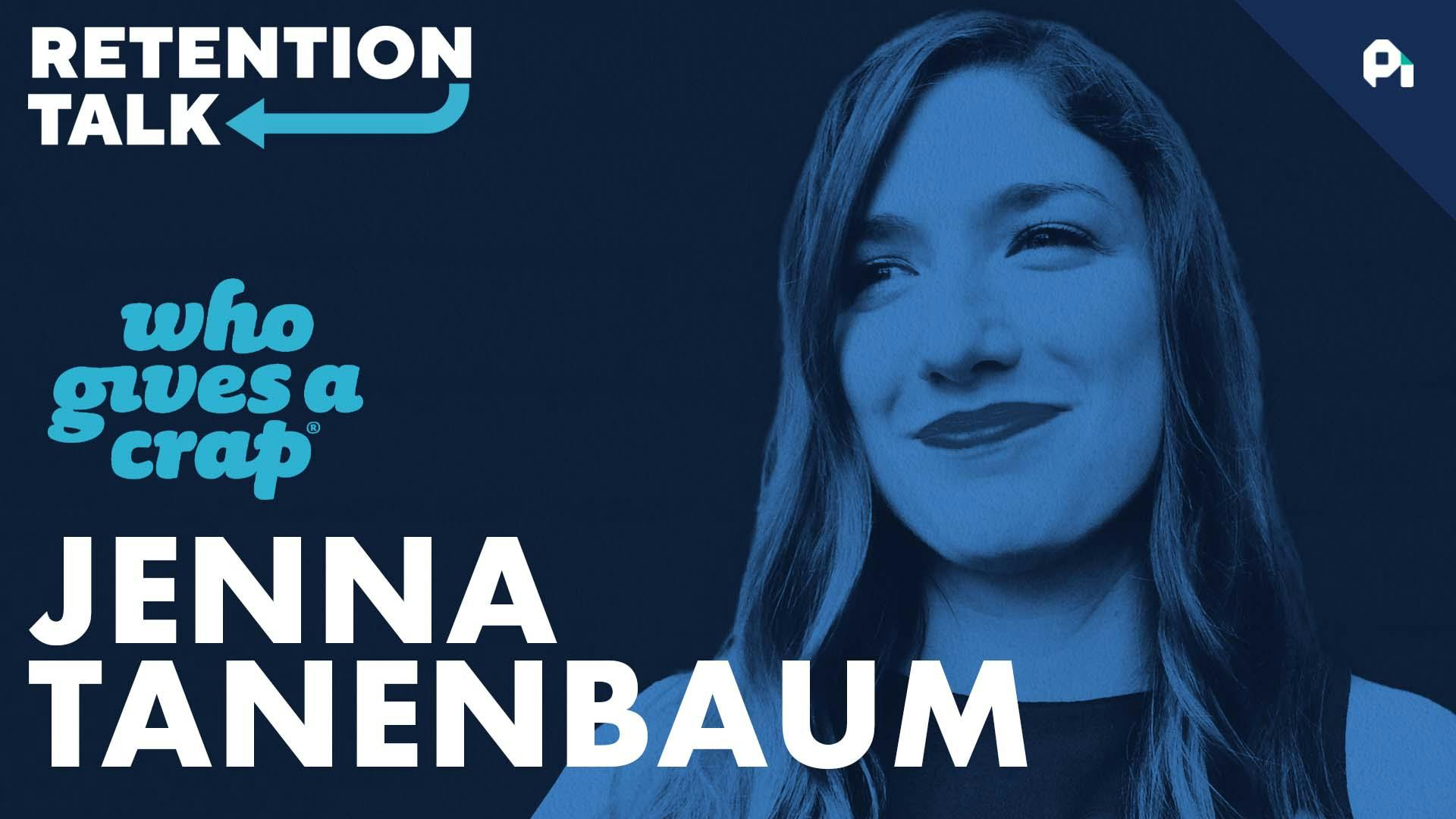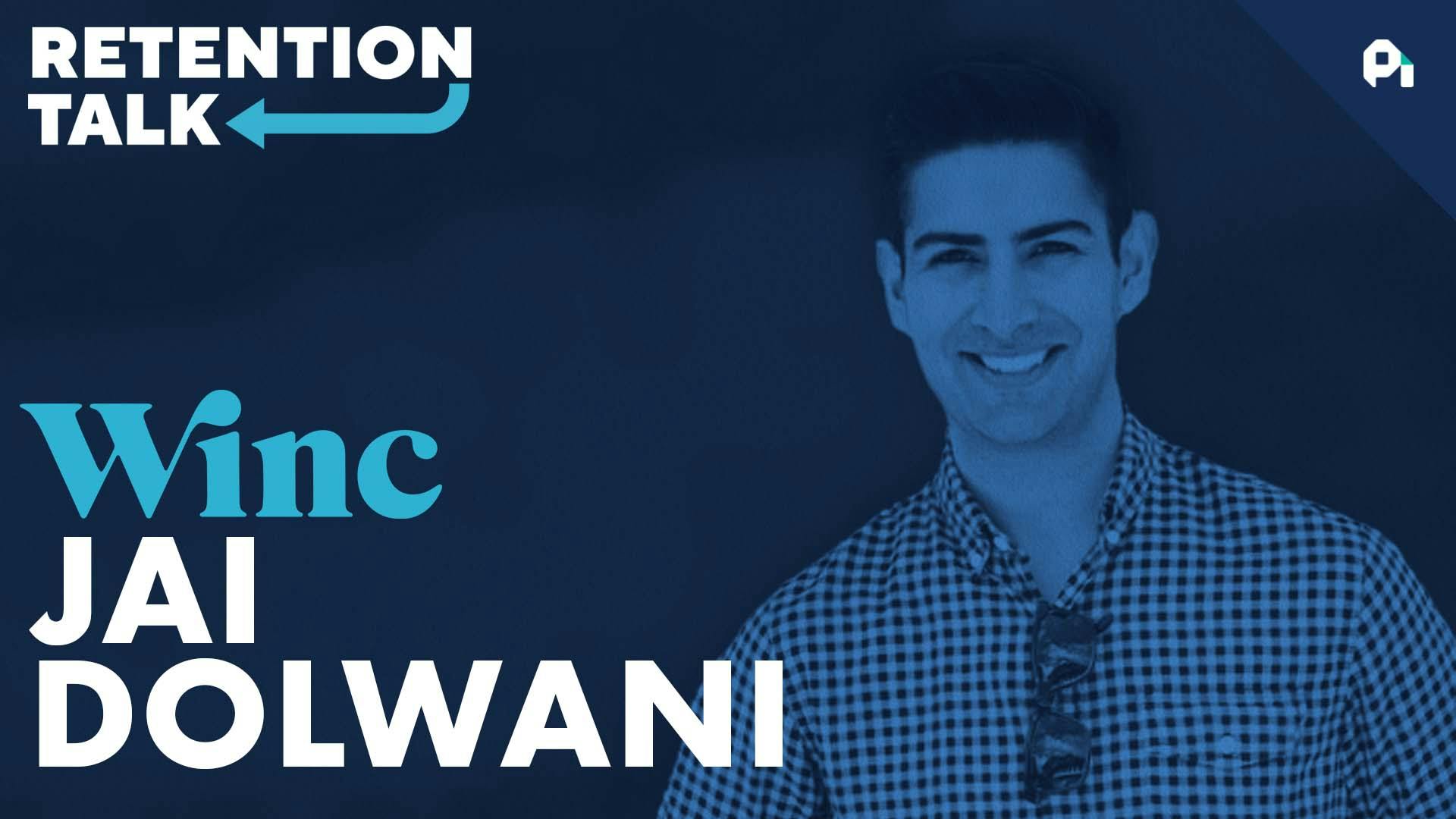
Customer surveys, leveraging NPS, and the power of onboarding | Hunt A Killer’s Mary Callaghan
This episode might reference ProfitWell and ProfitWell Recur, which following the acquisition by Paddle is now Paddle Studios. Some information may be out of date.
Please message us at studios@paddle.com if you have any questions or comments!
What’s the most important thing to focus on when it comes to retention? Your focus could come in the form of a metric or anecdotal indicators of repeat purchases. But what if you didn’t care about repeat purchases at all?
On this episode of Retention Talk, I spoke with Mary Callaghan, Sr. Lifecycle Manager, B2B over at Calm (at the time of this interview, she headed up retention over at Hunt A Killer). We talked about using ongoing surveys to learn from customers, leveraging NPS to directly influence the product roadmap, and never underestimating the power of onboarding.
Key points discussed in the episode
We know we're going to serve you this amazing immersive experience, and we know that customers are going to want more of it.” – Mary Callaghan
Use ongoing surveys to learn from customers
When you survey customers you can come to understand their journey and the various pain points they have every step of the way. By breaking surveys down to the cohort level, the picture becomes even clearer. No two customers are the same, but a solution for one product might not work for another.
Leverage NPS to directly influence the product roadmap
Hunt A Killer prioritizes what they can do broken down by small and quick wins. These add up to longer term initiatives to give a boost to customer satisfaction. By implementing NPS within the roadmap itself, the product is built from the core to satisfy the customer.
Never underestimate the power of onboarding
If you build a product that customers love, they’ll come back. This is easier said than done, but focusing on onboarding can help you get there. Communicate earlier, more often, and more effectively. Continually optimizing your onboarding process will pay dividends with retention.
Take Action:
Customer onboarding is essential to help new customers when they begin using your SaaS product. This can come in the form of tools like videos, tutorials, walkthroughs, documentation, use cases, blogs, and learning guides. If you can nail your customer onboarding process, keeping customers around for the long haul will become second nature.
5 ways to build a customer onboarding process
1. Map multiple customer journeys by persona
Assign a unique customer journey to each target persona. Understanding your customers will help you adequately target them and map out the journey that will lead them to you. Your customers' pain points, goals, and feedback should form the basis for creating this journey.
It’s important to understand the step-by-step process your customers go through from discovering your solution to buying it, and finally becoming a loyal user.
2. Have a customer engagement goal
Retention derives power from well-played customer engagement. Happy customers engaged with your product usually tend to be more loyal and spend more with your company. These customers eventually become influential brand ambassadors.
Improve your customer engagement tactics, and you'll see your retention rates go up. This rate will, in turn, keep you a step ahead of your competition.
3. Ask new customers for feedback on their onboarding experience
Encourage those customers that just went through the experience to air their opinions about it. These customers are your most significant source of insight about what makes the experience good or bad.
This simple action will give you deeper insight into improving both their experience and your product. Encourage your customer success team to follow up and keep the communication ongoing to learn what's working and what's not. This, in turn, will make your customers feel valued and supported, increasing retention.
4. Connect with super-users for input on what can be improved
The most crucial assets in your company include your super-users. This group can offer real-time customer feedback about your solution, value, and how they've benefited from it to gain success.
Furthermore, because your super-users are highly engaged with your product, they can also provide you with important information around what's not working or what can be improved, as well as what other features would be highly beneficial.
5. Iterate on your customer onboarding process by cohort
Building a solid customer onboarding experience that produces better metrics is not a set it and forget it process. Instead, it needs a highly iterative approach.
Along the way, some of your assumptions may turn out to be wrong. But you may not need to make over your entire customer onboarding process. You may realize that the customer journey you mapped out for a particular cohort had some bottlenecks or barriers. Improving your customer onboarding process by cohort will facilitate the iterative process and overall workflow.
Don't be discouraged, as it's part of the whole process and will help you continually improve. Continue iterating to refine the process and ensure you're targeting the given personas with the right tactics.
Do us a favor?
Part of the way we measure success is by seeing if our content is shareable. If you got value from this episode and write up, we'd appreciate a share on Twitter or LinkedIn.
It doesn't matter for us, and you're buying our products. We don't actually care, and that has no impact on you making repeat purchases. It only matters if you're playing our game. We know we're going to serve you this amazing immersive experience, and we know that customers are going to want more of it.
And so it's our job as a company to get you to move past the buying stage and to give you that aha moment with our products and turn you into an advocate for our product and get you really excited about it.
Welcome to Retention Talk. I'm Neal Lassi, and we're talking to the best minds in the world of product and customer success to bring you actionable strategies on reducing churn and boosting retention. This week, we're talking to Mary Callahan, who's the retention marketing manager at Hunter Killer.
Today, we talk about how Hunter Killer uses ongoing surveys to learn from their customers, how they use NPS to directly influence the product roadmap and pay close attention to what Mary has to say about focusing on the onboarding and customer experience above everything else and how that's the key to hacking retention.
Let's dive in. Thanks for being here, Mary. We're obviously big fans of Hunter Killer, we've been working with you guys for a while now. Real quick, give the audience a rundown of who you are, what you do and how you end up at Hunter Killer.
My name is Marion Callahan. I am the retention marketing manager at Hunter Killer. And for context, 10 to Killer, we think of ourselves as an Amercian same company. So not just a subscription banner. Hoorn product is a subscription infrasonic murder mystery horse.
So customers sign up and there is Nieve monthly boxes. A murder mystery in six parts in the last year or so. We really expand in our product offerings to offer more than just a subscription product and to offer multiple episodes in one night or single box premium experiences and now a retail box that you can find at
Target or Amazon. My role in all of this is to ask a lot of questions and solve customer pain points and reduce friction. So I'm looking at churn. I'm looking on a drop off points. How long we're retaining customers and how we can keep them on for longer.
A lot of things will break down here first. Your product is super cool. I mean, like I, I don't know of too many murder mysteries that operate at this scale. You guys do. And it's awesome to see how you guys continue to ride the wave of obviously the initial six like episodes.
But there's people want more clear. Your customers want more. I guess like I'm super curious, how did you end up in retention or customer success? Because I think you and I understand like just how important it is to grow a subscription business.
But how did you end up here? My career my background is in email marketing. I came from a community company, so I was doing legal tech when I was tasked with doing was a lot of support activities for our customers, finding value, making sure that we were proving that value over and over and over again and communicating
it to our customers to make sure they weren't canceling their contracts or me or finding ways to convince them to excel and to expand their, you know, their stand with us. So coming, a hunter killer. I was brought over.
Email marketing manager is my first job in my community space. And actually this is direct to consumer. So we don't really go through anywhere and we're just talking to our customers directly. And I was tasked with optimizing our welcome series, making sure that when you sign up for our email list, you can identify with a use case
and you can identify with a way to play and understand what we were offering you and then working on our onboarding series for customers. So once you sign up, how do you start playing what tools you need? How do you organize?
How do you get excited and join our community and really start connecting with people in all of these roles? I just gravitated towards these retention issues and asking a lot of questions. The gifting program that I was mentioning earlier, I just asked questions about that, and I noticed that it was coming up a lot in our cancelation
survey. And people were just saying, you know, I really didn't like this gifting experience. I didn't like that I had to add my own credit card information. And when I signed up, I didn't like that. I only got her free in my hand, one sixth of story, and I didn't want to pay for anything.
And so I started asking a lot of questions about that. And at the time that this was happening, we just happened to have an open role that we were looking to fill, and I'm a fit for it. It was kind of decided that I was asking the most questions about it.
I might as well slide into this role. My background is an email sent me off to understand the data, understand how to pull the levers, and he's given me kind of the framework for this landscape of overcommunicating or value to customers.
That's awesome. It's funny. One of the first things you said is like ask questions. Right? And I think for both B2B candidacy and in some ways, like access to customers might be a little easier in one or the other, depending on the product.
What's your approach? And like, how do you ultimately get insight from customers? Is it just starting with the ones I cancel? Is it is it something else? Like how do you ultimately get insight from customers to the point where you can then make decisions off of it?
Yeah, this is something that we're actually overhauling right now. And so I'm kind of taking the reins on this. We surveyed people. Well, I don't think we were doing a good job of doing it frequently and strategically. So we would survey people at point of Hansell, we had survey people throughout the year through campaigns, just the things
that we're trying to understand. And then as part of your onboarding experience with us, we were kind of check in with you and say, what do you think about school or what kind of, you know, how are we serving you?
What we did starting in January of this year, we sent a massive survey to understand customer experiences, my cohort. So whether or not you felt with us and then what kind of products you bought, if you canceled and then bringing on those four groups, would you be content your customers, current customers, current customers who don't like our
subscription based on their products? Then hands on customers and then asking them specific questions about that experience, so why haven't you? What are your objections? What's your feedback? What did you find this again? And that was a massive campaign that we've done that has given us so much insight.
And then on top of that, rather than the one survey that we were running, each of our products now has its own a survey from which we're gathering data. So new effort. And it's really, really informative. We're getting so much information about these products that people are buying in huge quantities.
Some of our products just like fly off the shelves. We can't keep them in stock, but we're learning that some of these products might not actually be a good experience for customers and we might actually be harming ourselves by selling them similar products, even though we're selling a lot of them.
It's going to reduce the LTV long term, because if that's your first experience with nothing and we have position it well to you and we haven't communicated what that experience is like, you're in for a hell of a ride.
Well, yeah, that's super valuable, right. Your sales. And Mark, I've gotten I've seen your ads, your sales and marketing team are stellar, are crushing it, and I think you are enticed to test out the product. But I think to your point.
Right, if the positioning is off or it's not a good fit, then the renewals are going to be a problem. Right. So like what's one thing you learn from that cohort of users that may have bought once but didn't renew that led you guys to change something?
One of the things I was a really interesting learning for us this year is that with our subscription product, our current season curtain call, the first box has one objective in it that doesn't take a lot of time to solve.
But there's all of these other elements of the box that we want you to solve. We just don't tell you to solve. We ask you to find the murder weapon and identify that with the evidence. You provide it, and that takes you 10 minutes.
However, in that box, you should also be setting up your timelines, organizing all this other evidence, diving deep into character profiles and understanding who the suspects are. Right. Well, if we don't tell you to do all of the other things, then you're going to feel like that was never really low value experience that lacks depth.
And so that's one thing that we are improving. We're not going to change that box, that toxin's brain on its own, that we will tell you the science of solving the murder weapon. Here's all these other support activities that's going to make the rest of the game much more enjoyable for you.
So you're going to you're going to get a lot out of it. And we find that customers who spend between 30 minutes and 90 minutes on their first box are the ones who find that this is the best experience that they're getting the most out of it.
That's interesting. So it's probably like you don't need to change the product at all. It's just the instructions or the framing of the initial challenge that probably got the customer to see how much more value there was in the first box, right?
Yeah, exactly. I guess the other thing that I'm curious about and you mentioned earlier was how you have these periodic surveys that go up and down. You also have NPS broken down by product. Tell me more about that.
How does that work? How do they differ between product lines and and ultimately, what are you trying to learn from from doing those NPS service? The services themselves are pretty uniform. The only thing that is different is if you're going to a subscription and, you know, survey, we're going to ask you, how does it compare to the
last season that you played? So if you started on curtain call and now you're on the next season, which is star struck, how do you compare Star Trek to the previous experience that you had? Otherwise, we're asking you, is this the first experience that you've had with Hunter Killer?
How are you rating it? And based on this experience in particular, what did you find ahead? So there's no like the quantitative pieces of information that we're getting. And qualitatively, we're asking people just for their feedback. And I'll tell you, raising it, Darren Byproducts level has been so informative for us and very instructive.
We're looking at retiring some products at this point because we're learning that some of our data is coming in and some products like there's nothing that we can do to change it for today's customer because we've just grown so much.
So the products that we're finding customers aren't really responding to are the products that we launched in 2017, 2018, when we were a much smaller company and when we were more nesh. And when your audience is smaller, you're creating products for that weird like niche group of true crime and murder mystery hobbyists, you know, and now because
you can find Hunter Killer on the shelves and Target or Amazon, we have a much wider audience to please. And when you have this great experience, that product has AMPAS and have a 50 and then and they're going onto your site and they're just finding something that interests them and.
Turns out to be one of our lower end games. How do we know they want to take another risk on the next product? It wasn't a good experience. It was similar to the bar that was set by their first experience they had with us.
That's an interesting challenge, because I think on one hand, you want to grow, right? And you want as many folks as possible to experience particular. But at the same time, you persona's the buyer you described three, four years ago, the hobbyist is almost certainly now a subset of everyone that's buying on tegular.
So that's that's super cool. How like what does the whole process look like, if anything at all? If I give you a a low score on the survey, what happens? Nothing really. I can tell you that I'm reading every single response at this point, and it's a lot to keep up with.
But it's important to us whenever our new products launched and we were getting samier feedback in it and potentially an issue with the way the game was hit. So the way that we were layering pieces into this box, the answer was being kind of given away earlier on, and we wanted you to see it.
And if we just reorganized the evidence, so it's at the bottom of the box, it really hit him in a way. In that case, I reached out to some of the customers and you had that experience and asked them to expand on that.
We're a small enough company at this point where I can look at customer feedback and interact with them directly. It's really, really important to us to survive and experience. And so it's worth our time to communicate with customers.
No, absolutely. I guess so. Like on a tactical level. So it sounds like you're reading almost every response, if not all of them. It's certainly impacting the product roadmap and the way you guys not only build new products, but but just different ones on a tactical level.
How does this work? Are you going to the product team on a on a somewhat regular basis and saying, hey, here's what we're seeing? Is it frequent, infrequent? Like how how do you ultimately convert these insights into action?
You know, with all the other stakeholders internally, we're in the process right now of building out our twenty twenty one roadmap. We're late into the game, but I haven't been in this role for, you know, six months. Even this transition from email has been, you know, recent for me.
And also all of the insights that we're getting at this point are new. So we're getting these insights from this survey, and we're we're running all these new survey programs through February. So we've gone through. We're taking the results from our cancelation data, our cancelation survey data.
We're taking the results from our DNA. And this other survey campaign that I was explaining, and that is how we are layering out quick wins and long term wins for us for our retention program. So our quick wins, our top three are going to be things like including recaps in our Vox's content product initiative.
We found that forty seven percent of our current customers can't remember what happened in the last month's episode. So it's an easy day for us to say, OK, here's what's happening. Start the story, know drop and then build that immersive and worldbuilding experience for them.
We also know that customers want more of the bonus content that we're serving them. So a really cool thing about our game is that we send you emails from characters in the game or from life institutions like the theater or the sheriff's office in the game throughout the month of your subscription.
We create podcasts that you would hear. Now layer in and you expand the American story. But we know that not all of our customers know about this. But there's a huge correlation to your interaction with this content and your retention with our product.
So making sure that we're communicating this earlier more often, just more effectively, and then, you know, improving our onboarding experience and making sure, you know, all of these things that we provide. And you understand really early that you understand as a customer how to use your account, that you understand how to get the most out of your
subscription. So we're looking at this as easy things that we can do right now, that cross-functional your entire team is going to work on. So our product team will be working on this, our marketing team. We're going to have technical requirements that we need to to build out our operations team needs to be able to make adjustments
based on this in the warehouse and our customer service team. We work with them to get some of these insights as well. I'm always astounded by I you know, I think my life is hard in software development. But with ecommerce, you have so much more about the supply chain.
The time to make these changes and ultimately get all the stakeholders aligned. Right. I can't imagine it's easy. But I love I love how you describe like, look, there's a bunch of low hanging fruit and quick wins that we can knock out of the way.
Like, hey, let's is that a recap? And that's going to massively influence the way in which folks perceive each episode. And then obviously, there's there's longer term efforts as well. That's awesome, I guess, like as we sort of think about, like all the things you mentioned, what are sort of like the key metrics or some metrics that
that the team tracks, right. Obviously, on high level, Retek, like net retention is the North Star for you and the team are the more granular things that the team monitors on an ongoing basis? And if so, like, what does that look like?
Yeah. So our North Star metric as a company is looking at episodes completed. So it doesn't matter for us. And you're buying our product. We don't actually care. And that has no impact on you making repeat purchases. It only matters if you're playing your game.
We know we're going to serve you this amazing immersive experience, and we know that customers are going to want more of it. And so it's our jobs company to get you to move past the planning stage and to give you that aha moment with our product and turn you into like an advocate for our product and to
get you really excited about it. So, yeah, I think as a company and we're looking at how many people are completing episodes, one of the initiatives in that is how do we bring customers along who fall behind? Right.
If you if you paid for four episodes when you play in one, that's a problem. And we need to start nudging you along and bringing you along in this experience to make sure that you are getting everything that you're paid or you're getting the most out of that.
So we look at who's going to complain. And, you know, we're we're in the process of really building out the other kinds of things that we want to measure. Another interesting one not for us is a subscription company.
And as a subscription, episodic like mystery company is important is how many people are reaching their next box. So when you sign up here on a monthly schedule that we have the functionality where you as a customer can say, send me my next box and stuff, I want it right now.
I love that experience so much. And so that is one that we look at closely. And if we know that that ratio of customers who are expediting is, you know, one point to one point four as it grows, we know that we're creating this addictive experience that people are really enjoying.
I love the way you describe it, because ultimately it's like you need to make sure customers are getting value. And if they get value, then they'll renew. Right. And in most cases, they were new earlier or the expert at the next box.
So it's awesome that like everything ties back to are they enjoying the experience? Because if you believe in the product, to the extent that if they enjoy the experience, they're almost certainly going to renew those slots as we put a lot behind our products.
We spend a lot of a lot of effort into making sure that people are served. And you look at our Facebook community, you know, we've got almost a hundred and fifty thousand members in that. And it's like a secret official career, but not in that community in like monitoring day and night environment.
Our community manager, Joe, like people know her name because she is so responsive to people asking questions in there. And I think every place I've worked anything, hunti pillar puts them nice behind its product. And we really we really care.
Last year, our CEO popped in the group and he said, hey, I'm the CEO, Hunter Miller. I love to talk to customers. And he had over 100 phone calls with our customers in that group. Oh, wow. He spent a lot of time making sure that people felt heard.
I love it. I think the the obsession on your team to like understand the customers, I think translates to just like the loyalty. And and I think the just how just how much customers love your product. Like it's evident from not only the number of you describing, but I think seeing the testimonials and like activity on social
that the buyers like really, really do love your product. So I think that that's ultimately like the recipe for success. If there's one thing I can say to you, we have learned this year that it might not serve us or our customers to force them into subscriptions, even though scription product is our core product.
We're learning that it might not serve our company in the past to offer this, and it might not send their customers not to force them into that. So we're really leaning into new learnings that we're getting from this.
If customers don't want a subscription, let's offer more other types of products. We listened to that and we are responding to that. That's awesome. Just to wrap up, Mary, let's say someone out there starting a need to see subscription ecommerce brand are three or four years behind you guys.
What's one piece of wisdom you wish you knew that would help them out? I'm biased. If you are just starting out and see ecommerce business, invest in Callington email marketing, you are going to have to lean into your email marketing program so hard.
And it's important that you have your strategy and your communication outlines. The value proposition upfront always returns to the value that you're offering. People always return to what they want and not what. You think they want awesome and lasting?
How do people find hunter killer if they're interested in learning more about murder mysteries or otherwise pentacle or dot com? You can look for us on there or you can go on Amazon and or on target and look for the next time Firefox or just search.
But starting at Hunts Killer dot com, all Americans are there. Awesome. Well, thank you, Mary. I really appreciate it. I think there's going to be people useful for, you know, the folks listening to this. And, yeah, really appreciate the time.
Yeah, I can hear is really nice talking to you. So much in that short conversation, thank you so much to Mary for dropping all that knowledge, and I am now personally so curious about how these murder mysteries really end up going to recap.
Hunter Killer uses ongoing surveys down to the cohort level to really understand the customer journey and dig up various pain points that customers have every step of the way. The second hunter killer also leverages MNPS that directly influence the product roadmap and prioritizes what they can do.
Broken down by small and quick wins all the way to longer term initiatives to really drive customer satisfaction. Lastly, Mary emphasized the importance of onboarding and customer experience. If you build a product that your customers absolutely love will come back.
